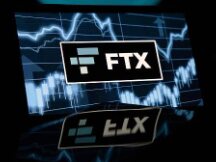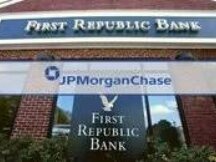Do Crypto Assets Affect Financial Security? Bank of England in this regard

On October 13, 2021, Bank of England Deputy Chief Financial Officer Jon Cunliffe announced to the public at the International Banking Conference (SIBOS) that the UK is focusing on studying the impact security "crypto assets". of the UK financial system. Jon Cunliffe said that currently the global crypto asset market has grown to US $ 2.3 trillion and some unsecured crypto assets (such as Bitcoin) and crypto redemption assets (such as fixed income securities) ) have started to log into finances. The size of this crypto asset is not worth mentioning compared to the global budget of $ 250 trillion, but it could affect huge markets. The risk may now be low, but it may increase more quickly in the future. Jon Cunliff also provided insight into how managers should respond to rapid improvement in this area.
Crypto assets and financial management
Global crypto assets in 2021 will grow from less than $ 800 billion to $ 2.3 trillion, up 200% from $ 16 billion five years ago. The bodies responsible for financial security must be vigilant in the face of the growing situation. “Innovative” crypto technology opens up the prospect of financial services transformation, and most crypto assets are worthless and risky for large-scale financial processing. At the same time, crypto assets are starting to integrate with existing financial institutions and the gains associated with leverage have appeared in the market. More importantly, these changes have taken place in areas where there is not much regulation, where current financial security risks are rare but may accelerate. The increase in risk depends on the nature of the risk and how quickly management responds.
What does the term “crypto asset” mean in finance? The next consequence is the application of crypto exchanges for the registration and exchange of assets (usually transported to public networks). The collection and transfer of ownership of assets are the basis of financial resources for the storage and exchange of value, and crypto technology enables these operations to be carried out without a bank or a trustee.
In the financial industry, “crypto tokens” include many innovations in financial devices, industry and services.From a financial security and supervisory standpoint, it is not the basic equipment that matters, but the mode and purpose of use.In other words, admins shouldn't be looking at the technology, but looking at how the technology works. Therefore, administrators should have the same risk management across all technologies. In order to better understand the risks of crypto devices, it can be divided into insecure crypto devices which are generally used for desired investments and crypto assets used for payment and settlement.
Insecure cryptographic assets such as "Bitcoin"
Of the $ 2.3 trillion of crypto assets in the world, unsecured crypto assets account for almost 95%. It is a large string of non-replicable computer code that can contain or transmit a virus without an intermediary. There are currently nearly 8,000 unsecured crypto assets, most of which are representative of Bitcoin. These unsecured crypto assets are not reasonably priced and have no assets or inventory after which their value depends on the value that the buyer intends to pay at any time and therefore cheaper, and the rate exchange rate is 12 times higher. . Therefore, the primary use of unsecured cryptocurrency assets is for speculative capital.
However, the behavior of crypto assets is not secure. In the UK, many investors see it as a change or addition to a significant investment, with half of existing insurers saying they will invest more.When an entrepreneur starts a business venture, there are signs that investor interest has increased.. These companies decide whether or not to include cryptocurrencies in their portfolios. At the same time, many difficult investment strategies began to emerge, including crypto futures and other derivatives.
In addition, some large financial and venture capital firms are also starting to enter the crypto space. Many banks provide or plan to provide digital asset management services. Some international banks have launched or are considering the future market for future crypto and non-crypto assets, and offer asset management services. Some organizations provide platforms for trading crypto assets or platforms that allow users to access other crypto exchanges through their apps, and some banks provide a single platform for individuals and businesses to pay. and invest in their networks. allows stable use of funds. Payment method.
However, there is more concern about the insecurity of crypto assets, especially in terms of protecting traders, fair trade and bad finances. A direct problem from a financial security perspective is the impact of the high cost of these assets. In the short term, these major changes are common, for example, over the past five years, the value of Bitcoin has fallen by more than 10% per day, with the biggest drop at almost 40%. If these crypto assets keep growing, they will integrate more into existing financial markets and their investment strategies will become more difficult, and the result will be what happened?
In fact, it is an important part of the financial process that investors must understand that the investment they need can lead to huge losses and generate profits even if it doesn't. .It is up to the financial security firm to streamline the process so that currency exchange rates and profit gains affect the entire financial system and not the actual business.Examples include the Internet bubble at the start of this century and the financial crisis of 2008. In the first, investors did not lose financial security despite significant losses, during the second period widened by the communication of subprime securities. Mortgages and non-performing loans were hit, causing huge financial losses.Although significant costs rise and a significant impact on financial security depends on the amount of assets invested in many important financial features, especially connectivity and effort, and also depends on the ease of financing. In other words, the fluidity of a leading system and the potential of a key part of the system absorbs losses.
So from a financial security standpoint, what about financial if the price of crypto securities drops (i.e. the value drops to zero)? Having implemented the post-crisis adjustments, the financial system is now stronger than ever, but that's not a problem. First, we need to consider the combination of crypto and financial stocks. The easiest way to contact isdirectly exposed, In other words, people or organizations been encrypted assets for guessing the mission. Because this activity is still in the traditional financial financial business, regulations are only limited to those of these resources. On the other hand, many of the largest investors in this field, and some more benefits in this. On the other hand, the main office has many to do the business directly to the encryption amount. There are other proxy services. However, in addition to the request for the hosting and trading company management department also makes assets of equal tools. Company companies that are mentioned that there is no further access to incomes to the existing funds in the resource. Also, the second capacity or indirectly spreads to other assets. For example, decline in the encrypted product can make the embroidery in addition to the encryption industry, and re-use other potential.
These cascading effects can affect the fluidity of the system. In order to measure the impact of the trading cost adjustment, the magnitude of the leverage effect must be taken into account. Today, entrepreneurs and organizations are able to maintain their operational efficiency through uncontrolled or regulated processes (with leverage up to 100x). All of this needs to be looked at in terms of non-transparency, as well as a broader view of crypto assets and trading platforms, which makes measuring risk more difficult.
Therefore, the implications of security crypto assets should be fully monitored by regulators, especially security regulators. Risks in this area are not the direct responsibility of financial security companies, but can lead to volatility that makes the business unstable. If they are big enough, they can cause financial damage and lose confidence in business. Smart price movements may not pose a risk to financial security at this point, but rapid growth will lead regulators to be cautious.
A secure crypto asset, also known as "stablecoin"
Due to the unreliable price, unsecured crypto assets are not suitable as payment gateways. To facilitate the payment of crypto assets, various crypto assets, denominated in fiat and sponsored by the asset, have appeared in the market. The existence of heritage is aimed at stabilizing the value of crypto assets relative to fiat money, and this type of crypto asset is also referred to as 'stabilization currency'. Stables make up a small portion of total crypto assets of $ 130 billion, accounting for only about 5% of total crypto assets. In the meantime, there are signs that some partners in the financial industry and large companies have started to use it, but now it is used more in payments as a payment method in the crypto industry. cash.
In the future, many organizations, including large-scale technology platforms, propose to expand the development of payment systems to facilitate large-scale use by the public. From a financial security perspective, this is very different from the problems caused by insecure crypto devices used for demanding investments. Electronic payments markets that support large-scale investments are an important part of restructuring the financial system and provide models for many developed countries away from fiat currencies. The reliability of testing on these payments will increase. Therefore, if the functioning of these systems is disrupted or if credit is damaged, financial security is threatened and bankruptcies of large companies can occur.
Cryptographic technology offers hope for innovation in payment and the use of financial transactions. However, stable large-scale goals cannot be created by lowering the bar or increasing financial security risk. Regulators need to ensure that designs for the current payment process have similar advantages in the stable payment process.
However, applying the “same risk, same rule” principle to payment processes based on fixed coins and crypto technology can pose problems.Unlike traditional payments that work with a bank or bank account, the fixed payment system offers their advantages called “coins”. This raises questions about the security and consistency of private spending in industry. The composition of the stable room can be distributed over the public network, and there is no unified organization for its operation. It can also be implemented in new ways based on principles of independence but integration which can affect the ultimate risk management.
Recently, the Committee on Payment and Commerce Infrastructures and the International Securities Regulatory Authority (IPPC-IOSCO) released a report stating that international standards for payment procedures and procedures The principles of economics d business should be applied to financial security. This report shows that the correct international standards apply to system configurations or system stability. Importantly, it provides tips on how to apply the model to some of the newer forms of fixed income that set it apart from traditional payment procedures. For example, a stable system decouples the role of creating, exchanging and storing payments. . . . Another key point of the CPMI-IOSCO guidelines is to clarify that financial security should be regulated by one or more independent bodies as responsible for the operation and regulation of financial security risk compliance. This includes ensuring that the operation of the system is consistent and can meet all management standards.
This information is currently under discussion and will provide a regulatory framework for regulators to include system stability parts as part of their oversight. However, the design of this model does not take into account the potential financial security risks of fixed income coins. When consumers and businesses prefer to hold or use fixed funds for commerce instead of holding and using bank funds in their bank accounts, it can lead to major changes outside of banking. As a result, many central banks began to study, model and estimate the magnitude and severity of similar impacts on the use of central bank digital credit (CBDC). The banking sector must adapt to these new challenges, and financial security regulators must ensure that these new changes do not affect the movement of the business community.
Decentralized finance (DeFi)
Decentralized Finance (DeFi for short) refers to decentralized financial services based on algorithms developed by the Distributed Ledger Technology (DLT) platform which is based on smart contracts and is not provided by intermediaries. Now,The most important application of DeFi is credit., representing almost half of the DeFi market. CornDeFi models and technologies can be used to redesign financial services processes such as storage, marketing, insurance, and supplies.. Although DeFi is still small, it has grown rapidly from less than $ 10 billion in early 2020 to nearly $ 100 billion last month.
The international process has had a huge impact and the anonymity of the DeFi industry presents unique challenges for regulators.. In the beginning, the industry involved hard work, opaque and risky financial activities, these being governed by the traditional financial system, but the integrity of the industry faces serious problems due to the lack of protection of investors and financial markets. Moreover, even if there are rules involved, the participants will not be followed and therefore the governing body will not be responsible. In practice, different platforms have different levels of decentralization, but in extreme cases DeFi platforms are completely decentralized and have no legal identification, ownership or personal contact.
Although DeFi is still in its infancy, its rapid growth will require domestic and foreign regulators to determine the risk of disrupting the financial services offered by DeFi platforms and how to ensure that DeFi systems comply with governance standards. in the traditional financial system.
go,While the current financial risks of using encryption tools are limited, the problem of low risk does not last long.. Crypto assets operate in a new but well-designed personalized way and can manage the risks associated with crypto systems just like traditional financial systems. Throughout history, new technologies have fostered the development of financial technology, and the emergence of crypto technology has offered great opportunities. The successful placement of crypto assets in border management allows the financial industry to thrive in the right way through the use of these new technologies. Improving the standards and procedures of this public policy campaign requires a rigorous and careful process.

Scan QR code with WeChat































